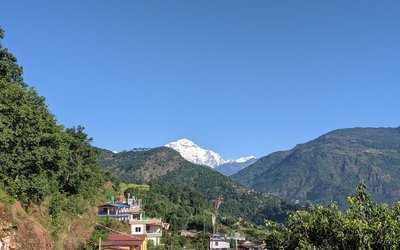When infected by“ Luto” ( scabies), patients in the old days burnt firewood and hurled them as far as they could in the hopes that scabies would magically disappear. Unfortunately this treatment was unsuccessful and often patients with scabiessuffered from intense chronic scratching leading to discomfort and super- added bacterial infection in the affected region of the body. Elderly persons, sexually active young adults, and people who seldom shower may be especially susceptible to scabies. Pet dogs are common means of spread of scabies although it is thought that scabies transmitted by dogs have limited distribution in the body and are not all over. Scabies infestation can lead to underlying bone infection ( osteomyelitis), blood infection, and even kidney infection. Luckily there is effective treatment for scabies.
Skin bugs ( parasites) infestation such as the scabies mite, although usually not life-threatening are a significant cause of distress for the patients. Other skin bugs are bedbugs, fleas and lice. Often as noted below these bugs are not visible on physical examination, but they clearly thrive in impoverished areas where overcrowding and poor living conditions are common. Clearly skin parasites need to be kept in mind when patients in Nepal present with skin lesions.
Bedbugs unlike scabies, do not live on the skin and are usually not found during a microscopic examination of a small skin sample. Patients with bedbug bites usually have 3 or more lesions in a row on the forearm or legs( commonly exposed areas)and are memorably called “breakfast, lunch, and dinner” sign. Bedbug bites also lead to excessive scratching of the affected area. Sometimes the stigma of bedbug infestation can lead to significant psychological impact that may result in excessive anxiety, insomnia and even depression. Bedbugs can occur especially in persons who have recently stayed overnight in hostels, hotels, hospital or a dorm room.
Lice tend to appear on the scalp in regional clusters and can be easier to identify with a magnifying glass on the scalp. Besides head lice there can also be body (“jumra”) and pubic lice. Body lice which are seen in overcrowded living conditions are uncommon in the Western world except in shelters, refugee camps and jails. These bugs are very susceptible to the cold so they prefer areas like the waistband where the temperature is warmer.Pubic lice are also common and may cause intense itching. Lice also transmit systemic diseases such as typhus, but limited studies done in fever patients in Nepal have not shown body louse to be a common transmitter of any systemic illness such as typhus.
Flea bite sites are also commonly, the ankle area.Fleas are also not found on skin during an examination. The diagnosis is often made by discussion of the patient’s history of exposure to animals. Out of all these skin parasites ( scabies, bedbugs, fleas, and lice) in Nepal,rat fleas ( called C. felis ) are particularly dangerous and can cause systemic illnesses like fever and pneumonia. Rat fleas carry a especial kind of typhus bug ( called murine typhus) which can get transmitted to humans from the bite site of the flea bite. Indeed after typhoid fever, in Kathmandu the second most important, documented common cause of non- viral fever is murine typhus. The best drug to treat murine typhus is doxycycline, and often because this drug is not used commonly in fever patients in Nepal, fever may continue on with the unnecessary use of other stronger antibiotics.
The topical treatment for scabies and lice is permethrin based medicine which is also available in Nepal. Bedbugs and flea bites do not have specific treatment except to use some mild topical cream to decrease the inflammation. Since house pets may carry fleas and mites, it is important to keep them clean and treat their infections so that diseases do not transmit to humans.

Buddha Basnyat MD
Buddha Basnyat, MD, MSc, FACP, FRCP, Director of the Oxford University Clinical Research Unit-Patan Academy of Health Sciences, Kathmandu.
- Altitude Sickness
- Feb 20, 2018
- Post-earthquake Nepal: The Way Forward
- Dec 13, 2015
- The Annapurna Sanctuary
- Nov 29, 2015
- Diarrhea at the Summit
- Nov 08, 2015
- Altitude Sickness ( AMS, HAPE, HACE)
- Oct 15, 2015















